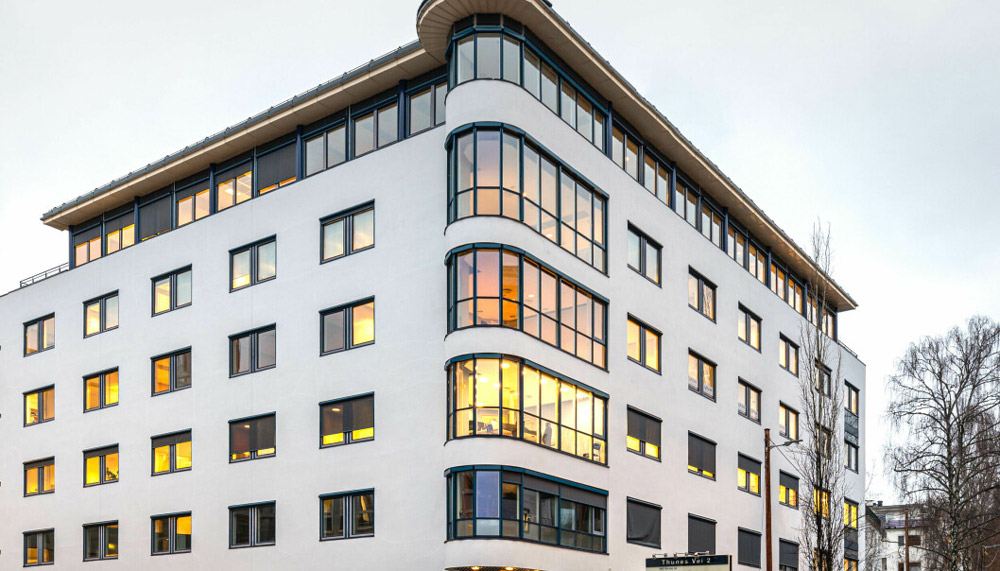Valuation of developed commercial real estate entails an analysis of typical value parameters, such as average market rent, tenant composition and solidity, rental contract length, owner expenses, extraordinary maintenance, development potential, and more. However, as the industry continues to develop, value parameters more numerous and more intricate must be considered.

In recent years, there has been a strong emphasis on environmental certification and the added value this may yield through increased attractiveness, reduced energy costs, and better financing conditions. There is a relatively broad consensus that “green” buildings produce better pricing than traditional buildings, but it is still too early to prove this with unequivocal statistics.
What should we then make of the many innovations in digitisation or the various companies that describe themselves using the umbrella term PropTech? There are countless exciting products and services, with digital solutions for cafeteria management, flexible underground parking spaces, electricity and water consumption measurement, air quality measurement, registration and provision of accessible workplaces, demand-controlled temperature regulation, etc.
What impact does this have on the value of a property, and how is this reflected in an analysis?
In theory, a fully digitised office building provides higher rent, lower operating expenses, and lower yield. Higher rent may occur because you gain an overview of available workplaces, allowing for more efficient venues putting more people in a smaller area, or because the tenant can reduce operating expenses due to reduced energy consumption, lower cafeteria costs, or similar factors. Lower yield occurs because the property appears modern and thus more attractive or because the property owner can gain better financing conditions. In other words, it’s a win-win-win.
For example, a “normal” property of 5000 m² GBA in central Oslo may have a price per m² of approx. NOK 56,700, estimated as follows:
Normal market rent 2800
Normal ownership costs 250
——————————————————
Net revenue basis 2550
Yield requirements 4.50%
——————————————————
Total value per m2 56.667
Building area (GBA) 5000
Total value (rounded) 283,300,000
The same building, but digitised with various solutions as described above, may, for instance, grant the tenant reduced operating costs at NOK 100 per m² and reduced ownership costs at NOK 50 for the owner. On a like-for-like basis, this may result in an increased willingness to pay an increased rent of up to NOK 100 per m², in addition to improved financing conditions that may entail reduced yield, e.g., by ten base points.
The same property may then give the following pricing:
Normal market rent 2900
Normal ownership costs 200
——————————————————————
Net revenue basis 2700
Yield requirements 4.40%
——————————————————————-
Total value per m2 61,364
Building area (GBA) 5000
Total value (rounded) 306,800,000
Of course, this is only an example, and the outcome of a digitisation process will vary significantly from area to area. The greatest benefits can be found in major cities, where this is receiving the most attention from larger professional property owners and tenants. It should also be noted that not all forms of digitisation measures may necessarily yield a positive result. For example, it has been said that users may be very frustrated with buildings where everything is controlled using one or more apps. This particularly applies in cases where digitisation has not been completed cohesively, using different systems that are unable to communicate with each other. However, the benefits may be significant if the right solutions are implemented.
We have already seen studies indicating that environmental certification may yield an added value of 5–7% in larger Norwegian cities due to increased attractiveness, reduced residual value risk, and better financing conditions. The upside may therefore be significant for the digitisation of buildings, particularly in the long term and in a market where direct returns are low. However, there are risks involved with being a leader in fields applying new technology. These may include growing pains, breaking-in periods, or higher construction costs.
In today’s market, it may seem like investors are less concerned with whether the building is green or not and whether it is digitised or not, so long as they acquire the building. The demand for commercial real estate with secure, continuous returns is viewed as high enough that these measures’ impact is completely marginal at present. However, there can be no doubt that it will be a factor in the longer term. This is not to mention that it will be a positive factor in a due diligence process that focuses on ESG, the property’s environmental profile, social conditions, and sustainable governance.
 Johan Berg-Svendsen, Veridian Analyse
Johan Berg-Svendsen, Veridian Analyse
Veridian Analyse are specialists in consulting for commercial and development real estate. Our employees have backgrounds in finance and technical construction, allowing us to assist with complete property analyses, whether this involves assessing the property in its current state as-is, assessing the property’s development potential, or assessing the property based on special premises.